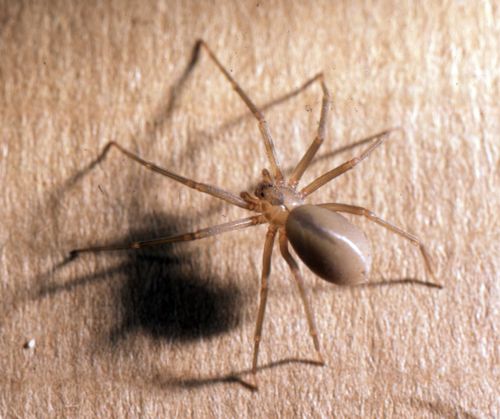
Brown Recluse Spider Bite Stages: A Detailed Overview
The brown recluse spider, also known as the fiddleback spider, is a venomous arachnid native to the southeastern United States. Its bite can cause severe skin damage and other complications. Understanding the stages of a brown recluse spider bite is crucial for timely treatment and recovery. Let’s delve into the various stages of a brown recluse spider bite, providing you with a comprehensive overview.
Immediate Bite
When a brown recluse spider bites, it injects venom into the skin. The bite itself is usually painless and may go unnoticed at first. However, the venom contains enzymes that break down tissue, leading to potential damage. The bite site may appear as a small, red or purple bruise, and you might feel a slight tingling or burning sensation.

First 24 to 48 Hours
Within the first 24 to 48 hours after the bite, the bite site may start to change. Swelling, redness, and pain may increase. A small, white blister may form at the bite site, which is a sign of tissue damage. Some individuals may experience flu-like symptoms, such as fever, chills, and body aches.
Second 48 to 96 Hours
After the initial 48 hours, the bite site may begin to heal. However, in some cases, the healing process can be delayed. The blister may break open, releasing a clear or yellowish fluid. This fluid can contain dead tissue and bacteria, increasing the risk of infection. During this stage, the bite site may become more painful and tender.
Weeks to Months Post-Bite
Several weeks to months after the bite, the healing process may continue. The bite site may develop a scar, and the surrounding skin may become darker. In some cases, the skin may become more sensitive or itchy. It’s essential to monitor the bite site for any signs of infection, such as increased redness, swelling, or discharge.
Complications
In rare cases, a brown recluse spider bite can lead to severe complications. These may include:

| Complication | Description |
|---|---|
| Myositis | Inflammation of the muscles, leading to pain, swelling, and difficulty moving the affected area. |
| Myonecrosis | Death of muscle tissue, which can cause severe pain, swelling, and potential loss of function. |
| Acute Arthritis | Inflammation of the joints, causing pain, swelling, and limited range of motion. |
| Organ Damage | Severe cases can lead to damage to vital organs, such as the liver, kidneys, and spleen. |
It’s important to seek medical attention if you suspect a brown recluse spider bite, especially if you experience severe pain, swelling, or other complications.
Prevention and Treatment
Preventing a brown recluse spider bite is essential, especially if you live in or visit areas where these spiders are common. Here are some tips to help you avoid a bite:
- Keep your home clean and clutter-free, as spiders seek shelter in dark, undisturbed areas.
- Seal any cracks or gaps in your home’s foundation, walls, and windows.
- Wear gloves when handling items found outdoors, such as boxes or clothing.
- Be cautious when sleeping in a room with a lot of clutter or in a tent while camping.
In the event of a bite, clean the bite site with soap and water. Apply a cool, wet compress to reduce swelling and pain. Seek medical attention if you experience severe symptoms or if the bite site shows signs of infection.
Medical treatment for a brown recluse spider bite may include:
- Antibiotics to prevent or treat infection
- Pain relievers to manage pain
- Topical or oral corticosteroids to reduce inflammation
Understanding the stages of a brown recluse spider bite can help you recognize



